I spent two pleasant days canyoning with Bob Sault up in the South Wolgan area. The weather forecast was for rain and storms so we chose canyons with small catchments.
On the first day, we set off from the Old Coach Road to Crooked Crevice Canyon. This was a canyon that I had pioneered about 12 years ago with Chris Berwick and David Forbes. It is very close to Tigersnake Canyon and makes a good double.
The canyon has three abseils. The second of which is down an awkward narrow slot. It would be very difficult to imagine how a fat person could get through! After that abseil, the canyon has two more narrow sections before a last abseil to the base of the cliffs.
On a later trip, Andrew Valja found a very convenient pass, not far from the canyon which takes you back up through the cliff lines – and right above Tigersnake Canyon. At the top of the pass is a very fine lookout.
Then we headed off down Tigersnake Canyon. This was a canyon that both Bob and myself, together with other bushwalkers from the Ramblers Bushwalking Club had found back in 1977. Bob had only been to the canyon one other time since that early trip, and that was in the 70’s.
We made quick progress through the top constriction. It is quite nice with some beautiful scrambles that some people seem to avoid by abseiling. Even the last drop can be scrambled down (we abseiled).
Then into the lower constriction. Bob hadn’t abseiled into the slot from lower down – so that is the way we went. This abseil starts from a chockstone a short way down the canyon. A 45m rope just makes it down this drop.
I went down first and noticed a very bad odour in the canyon. Something was dead! A short way upstream we found a carcass – it was a koala.
Then I indulged in some photo-pfaffing – playing around with my camera and tripod. It is dark in this canyon – but modern cameras can see quite well in the dark. Bob checked out a new exit pass while I photographed. The pass looked quite tricky.
Then we headed to the bottom of the canyon for lunch. On the walk out – it look like the forecast storms were coming. There were lots of dark clouds!
Back at the car, we headed to the Dry Canyon to camp. We walked a sort way down the track to where there is a small cave. Not long after – there was a storm, and the cave did provide good refuge.
After the storm had passed – we walked down to the Dry Canyon and to the lookout at the far end. I am quite surprised this canyon is not better known or more frequently visited. It is a quite remarkable and spectacular canyon – and so easy to get to. From the far end – it look like the next storm was coming – so we headed fast back up the canyon. The storm did hit just as we reached the top end of the canyon and we found a small cave to sit it out. But the cave started dripping -and then the drips turned into torrents – so we had to moved to another, bigger cave not far way. Here Bob spotted a faint aboriginal hand stencil.
The back to camp for a pleasant evening.
the weather forecast for the next day was for a lot of rain – and it did rain a lot in the early hours while we were asleep. After breakfast the weather didn’t seem too bad – so we stuck with our original plans to visit a nice canyon in the pagoda country. It was short scrubby walk to the canyon, and once there it was nice to find it had some water flowing throughout it. It is very commonly quite dry.
We abseiled in and enjoyed the short canyon. All too soon it ended with a second short abseil.
Then we had to do some more bushwalking which took us to another canyon. This one we could walk up and it took us close to the car. Good timing – as we had a lot of rain on the drive home.
More photos are on my website – day one here and day two here.

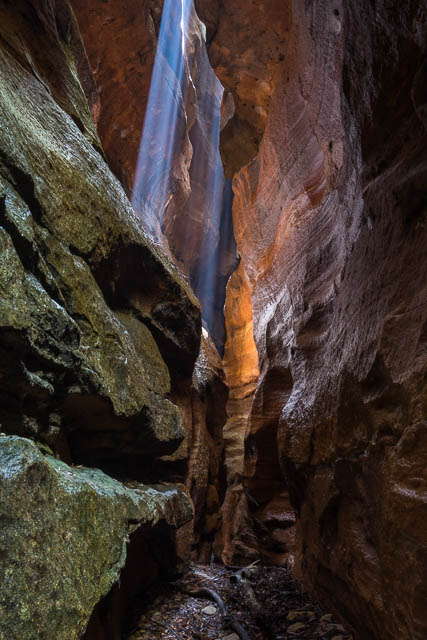
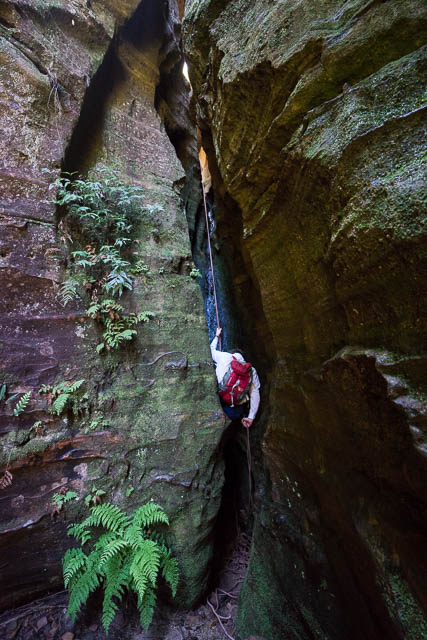
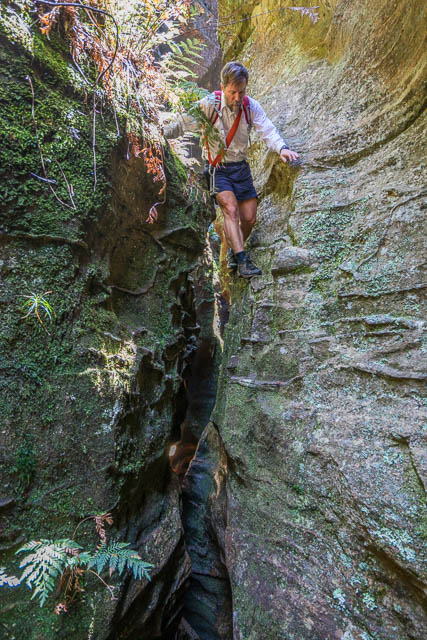
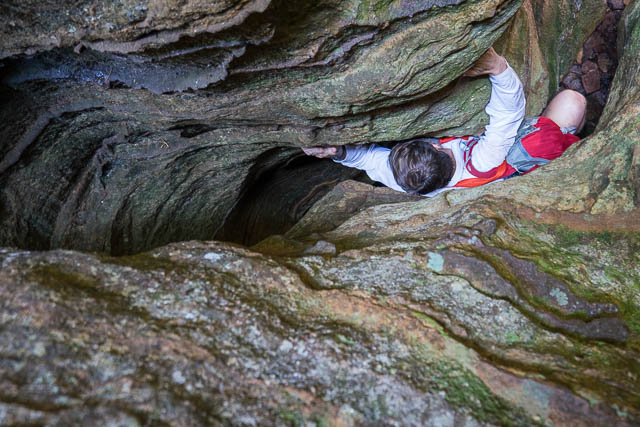
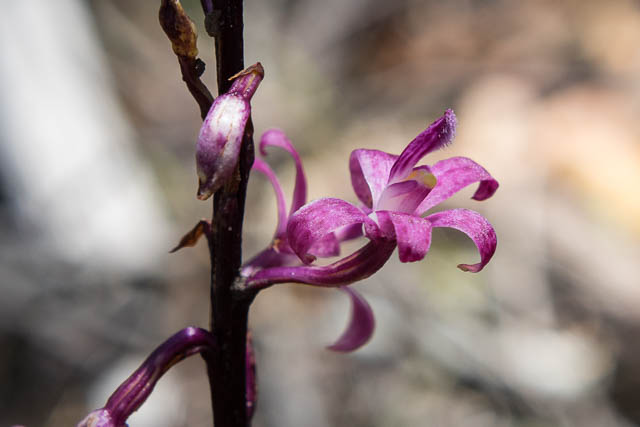
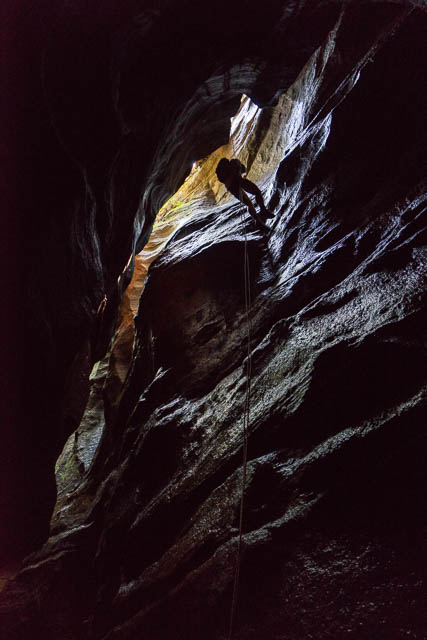

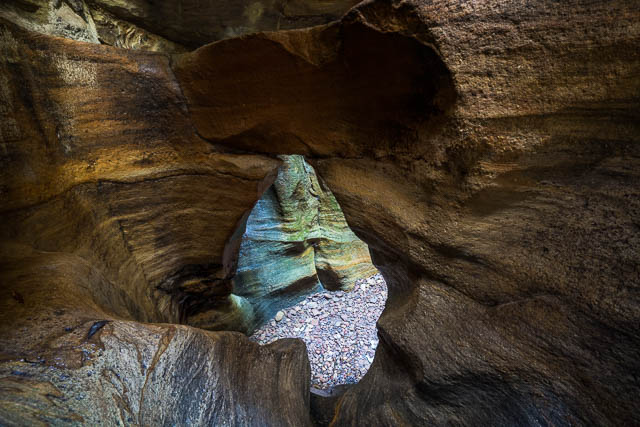
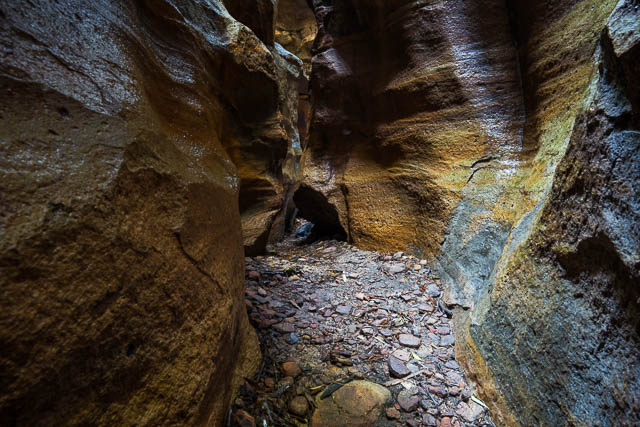
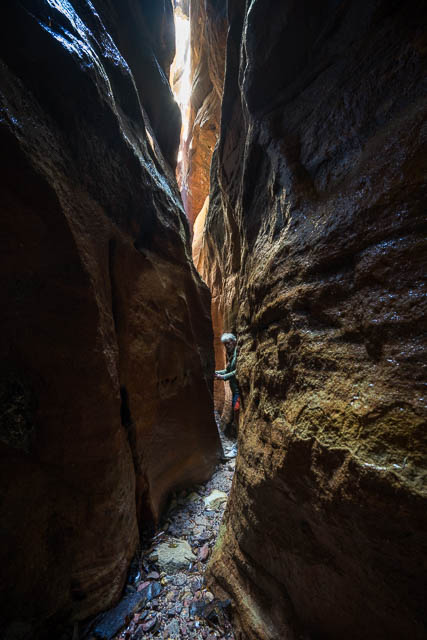
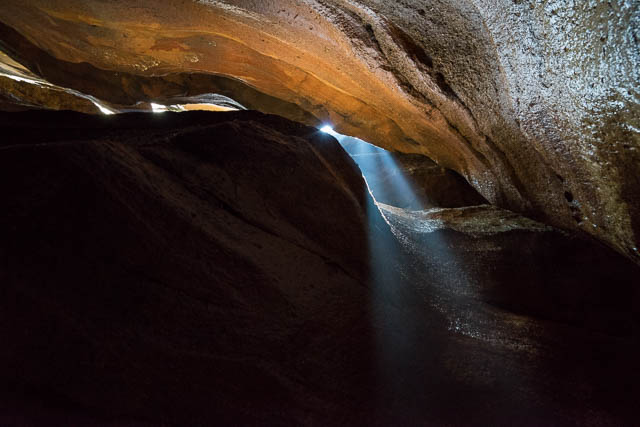
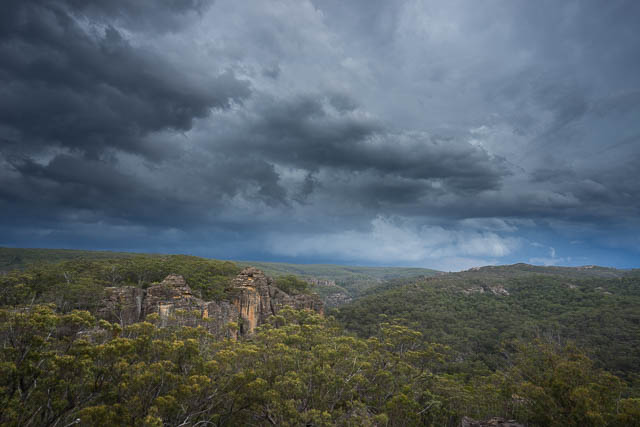
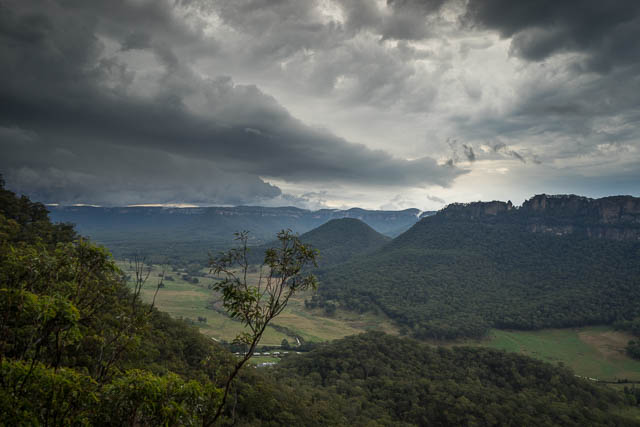
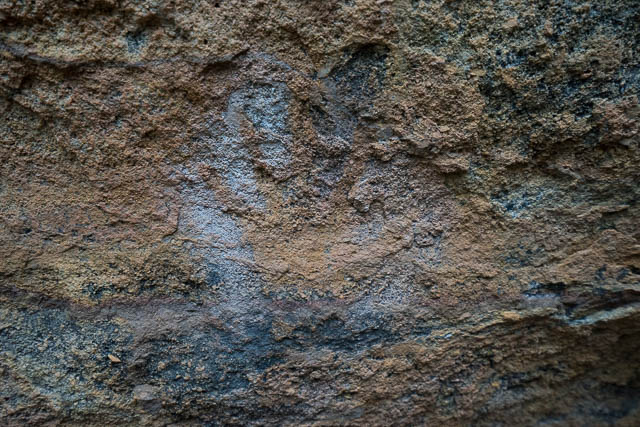
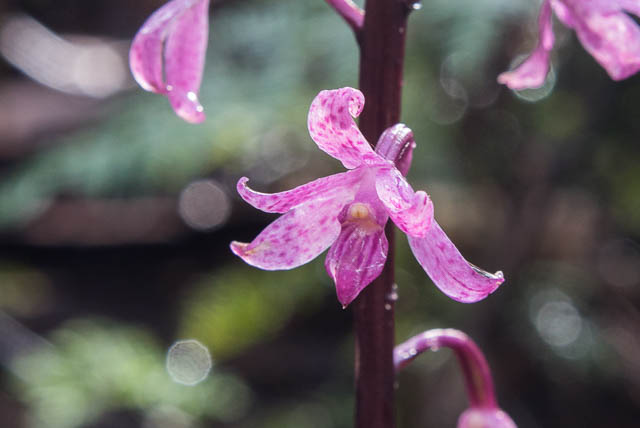

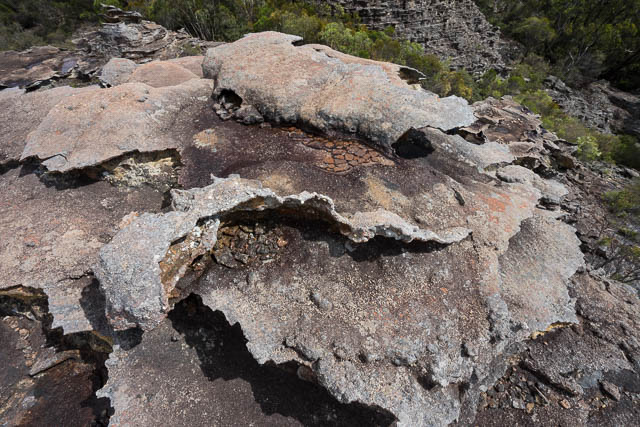
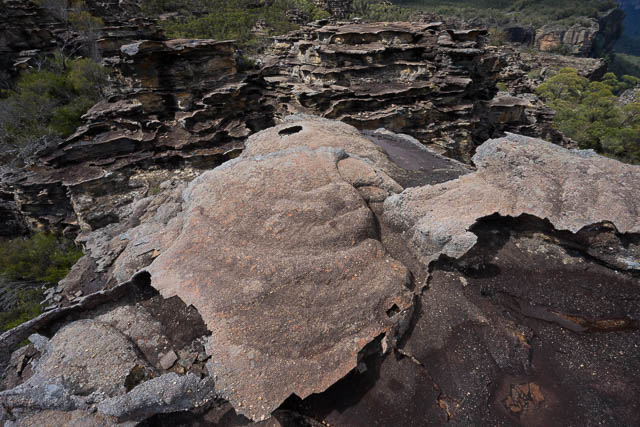
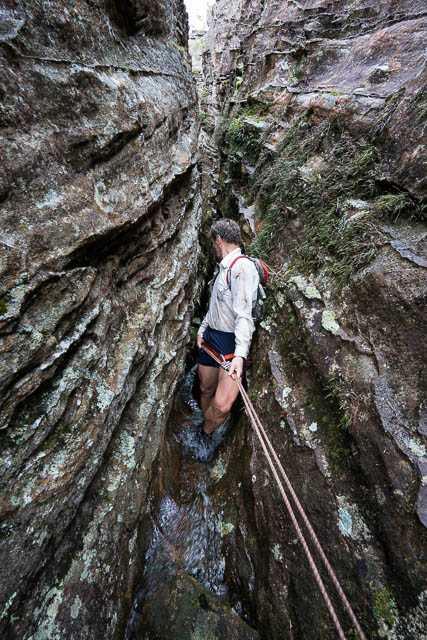
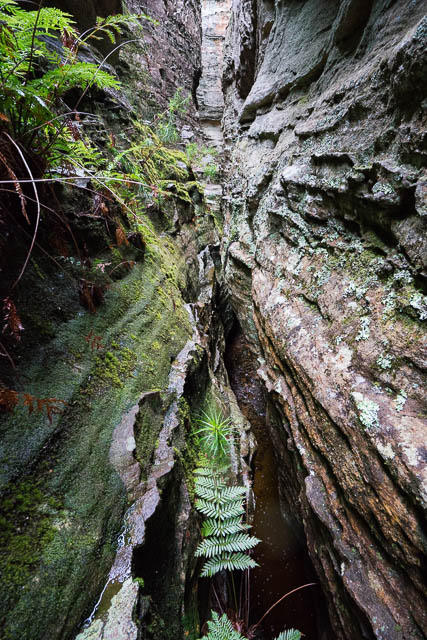
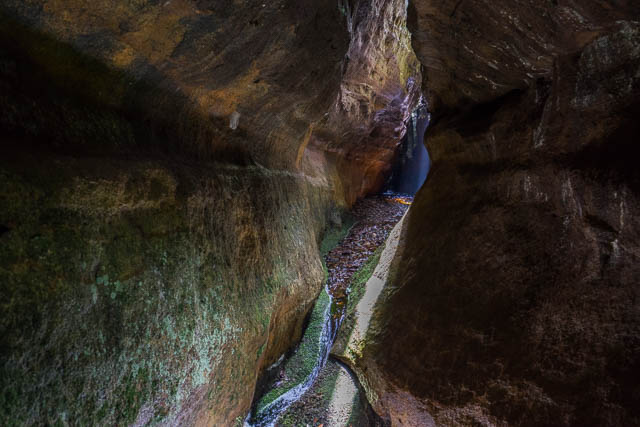
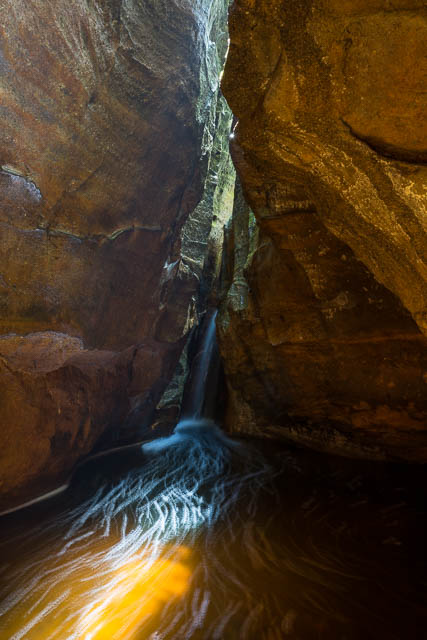
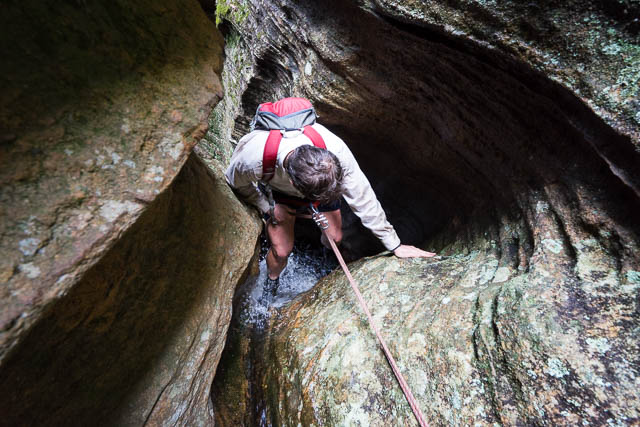
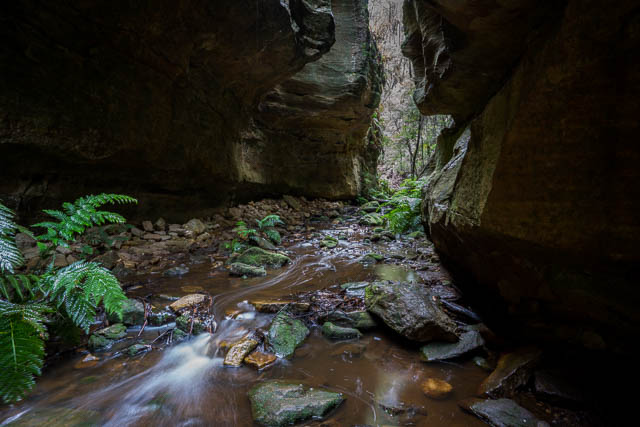
Hello David, very much enjoy your adventures especially the photos of flowers and wildlife. I know you came across pink flannel flowers earlier this year and l
Would love to see them in real life. If you have come across them again please let me know I live in the mountains and am always on the look out for them. Jo:)
Hello Jo
Yes pink flannel flowers are quite rare – but have recently appeared since the bush fires of last summer. Michael Keats has reported some at – GR 370 990 and 370 998 (Lithgow Map) 5th December. They normally last a few weeks.